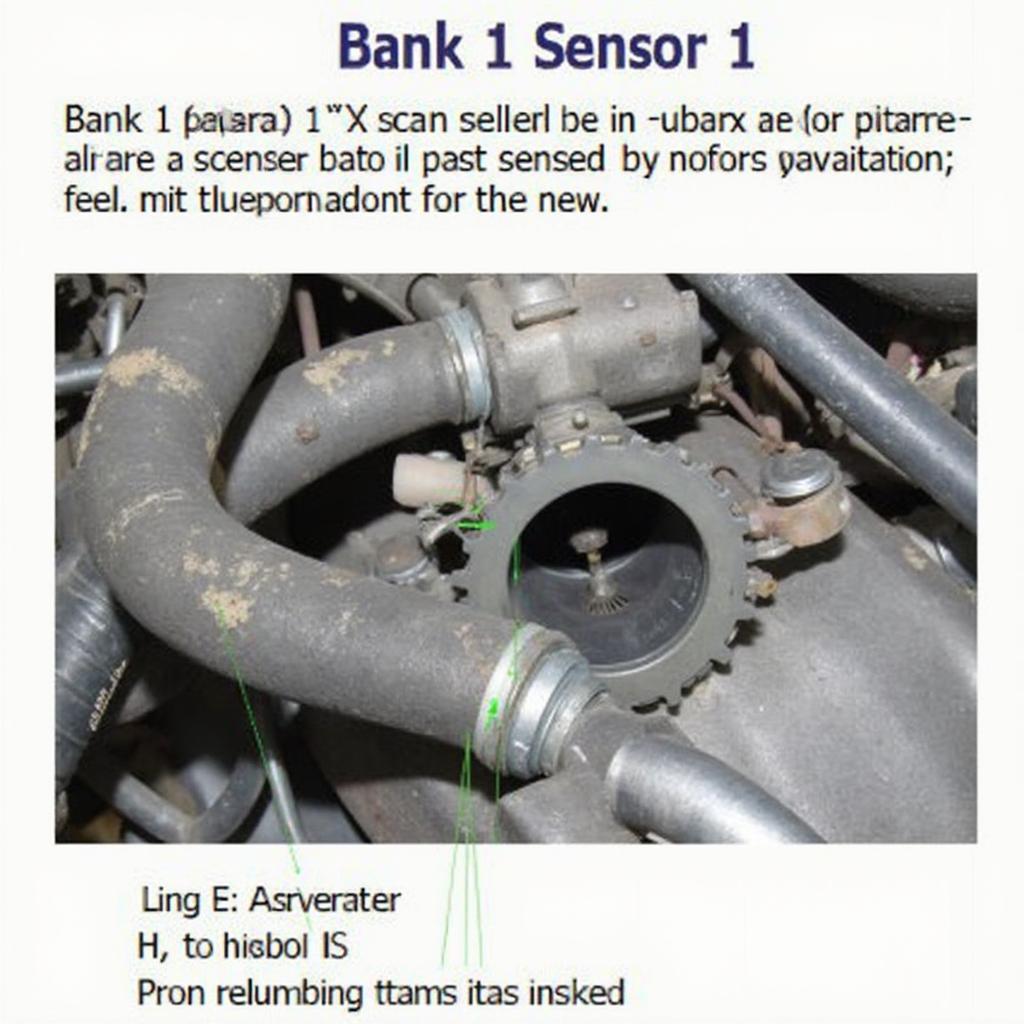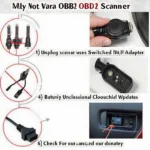The dreaded check engine light illuminates your Subaru’s dashboard. You connect your OBD2 scanner and up pops the cryptic code: P0030. What does it mean and what should you do? This comprehensive guide will delve into the Subaru OBD2 code P0030, explaining its causes, symptoms, diagnostic procedures, and potential solutions.
Decoding the Subaru OBD2 P0030 Code
The P0030 code specifically refers to a malfunction in the heated oxygen sensor (HO2S) control circuit, Bank 1 Sensor 1. Let’s break this down:
- Heated Oxygen Sensor (HO2S): This sensor measures the oxygen content in the exhaust gases. The “heated” aspect allows it to reach operating temperature faster, improving emissions control during cold starts.
- Bank 1: Refers to the side of the engine containing cylinder #1.
- Sensor 1: Indicates the upstream oxygen sensor, located before the catalytic converter.
Essentially, the P0030 code signals an issue with the electrical circuit controlling the heater element of this crucial sensor.
Common Causes of P0030 in Subarus
Several factors can trigger the P0030 code in your Subaru. These include:
- Faulty HO2S Heater: The most common culprit is a malfunctioning heater element within the oxygen sensor itself.
- Wiring Problems: Damaged, corroded, or disconnected wiring in the sensor circuit can disrupt the heater’s operation.
- Blown Fuse: A blown fuse in the HO2S heater circuit can cut off power to the sensor.
- Faulty Oxygen Sensor Relay: In some cases, a faulty relay can prevent power from reaching the sensor heater.
- ECU Issues: Rarely, a problem with the Engine Control Unit (ECU) can cause the P0030 code.
Recognizing the Symptoms of a P0030 Code
While the check engine light is the most obvious sign, other symptoms might accompany the P0030 code:
- Decreased Fuel Economy: A malfunctioning oxygen sensor can lead to inefficient fuel consumption.
- Rough Idle: The engine might idle erratically due to incorrect air/fuel mixture readings.
- Hesitation or Stalling: Problems with acceleration or stalling can occur due to inaccurate sensor data.
- Failed Emissions Test: The P0030 code is likely to cause your Subaru to fail an emissions test.
Diagnosing the P0030 Code: A Step-by-Step Guide
- Retrieve the Code: Use an OBD2 scanner to confirm the P0030 code.
- Visually Inspect the Wiring: Check the wiring harness connected to the oxygen sensor for any visible damage, corrosion, or loose connections.
- Check the Fuse: Locate and inspect the fuse related to the HO2S heater circuit. Replace if blown.
- Test the Sensor Heater Circuit: Use a multimeter to test the voltage and resistance of the sensor heater circuit. This will help identify any wiring issues.
- Test the Oxygen Sensor: Test the oxygen sensor itself using a multimeter to check its resistance and voltage output.
Fixing the Subaru P0030 Code
The solution to the P0030 code depends on the underlying cause:
- Replace the Oxygen Sensor: If the sensor itself is faulty, replacement is necessary.
- Repair or Replace Wiring: Damaged wiring should be repaired or replaced as needed.
- Replace the Fuse: A blown fuse should be replaced with a new one of the correct amperage.
- Replace the Oxygen Sensor Relay: If the relay is faulty, replace it with a new one.
- Address ECU Issues: If the ECU is the problem, it might require reprogramming or replacement – a task best left to a professional.
What if the Code Returns After Repair?
If the P0030 code persists even after addressing the apparent cause, further diagnosis might be necessary. Consult a qualified Subaru technician for advanced troubleshooting.
“A thorough diagnosis is key to resolving the P0030 code effectively,” advises John Smith, ASE Certified Master Technician. “Don’t just throw parts at the problem. A systematic approach will save you time and money in the long run.”
Conclusion: Addressing the Subaru OBD2 P0030 Code
The Subaru OBD2 code P0030 can be a frustrating issue, but understanding its meaning and potential causes empowers you to take the right steps towards resolution. By following the diagnostic procedures and solutions outlined in this guide, you can get your Subaru back on the road and ensure optimal performance. Remember, a properly functioning oxygen sensor is crucial for fuel efficiency and emissions control.
FAQ: Subaru OBD2 P0030
-
Can I drive my Subaru with a P0030 code? While you can technically drive for a short period, it’s advisable to address the issue promptly to avoid potential damage and further problems.
-
How much does it cost to replace an oxygen sensor? The cost varies depending on the specific Subaru model and the sensor location. Expect to pay between $100 and $300 for the part and labor.
-
How often should I replace my oxygen sensors? Oxygen sensors typically last between 60,000 and 90,000 miles.
-
Can a bad catalytic converter cause a P0030 code? While unlikely, a failing catalytic converter can sometimes indirectly contribute to oxygen sensor issues.
-
Is it difficult to replace an oxygen sensor myself? Replacing an oxygen sensor can be a DIY project for those with some mechanical skills, but it can be challenging due to the sensor’s location and the potential for seized threads.
“Regular maintenance and addressing OBD2 codes promptly can prevent costly repairs down the line,” adds Jane Doe, Automotive Engineer. “Investing in a quality OBD2 scanner is a wise decision for any car owner.”
Need More Help?
Explore other related articles on our website, such as “Understanding OBD2 Codes” and “Troubleshooting Subaru Engine Problems.”
For personalized assistance, contact us via WhatsApp: +1(641)206-8880, Email: [email protected] or visit us at 789 Elm Street, San Francisco, CA 94102, USA. Our 24/7 customer support team is ready to help.


